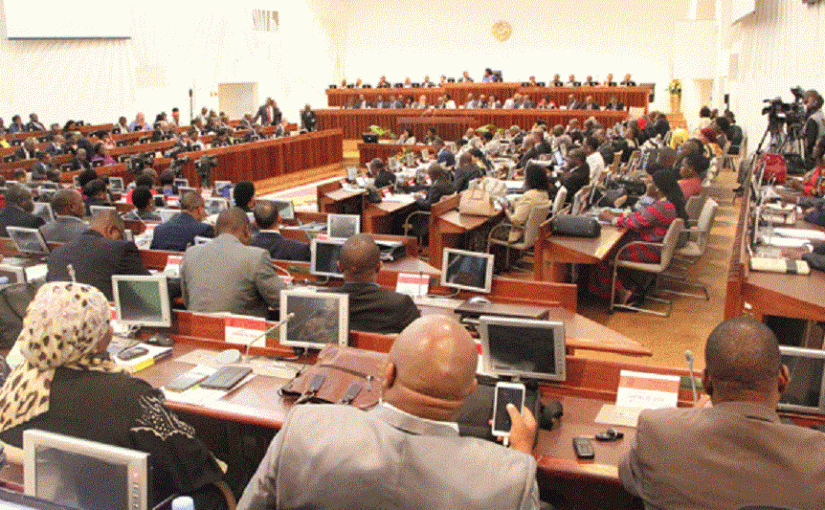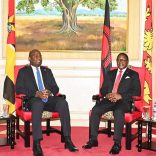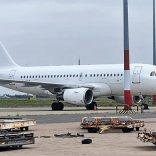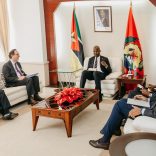Mozambique: Chapo begins working visit to Malawi - AIM report
Renamo “misreads” the budget yet again – AIM

Notícias (File photo)
In Tuesday’s parliamentary debate on the Mozambican government’s draft plan and budget for 2018, the main opposition party, the rebel movement Renamo, claimed that the budget grants more funds to defence and security than to social sectors such as education and health.
One deputy even claimed that the sums allocated to such bodies as the riot police (FIR) and the State Intelligence and Security Service (SISE) are “astronomical”.
Renamo makes the same accusation every year, and every year it is false. This time, Finance Minister Adriano Maleiane replied that, in reality, all defence and security bodies, taken together, account for 9.6 per cent of the public expenditure envisaged in the budget.
This compares with 63.4 per cent going to the economic and social sectors, once debt servicing and financial operations have been excluded. Education takes the largest share at 22.6 per cent, followed by roads (13.2 per cent), and health (11.5 per cent).
In absolute terms, Maleiane said, the defence forces are allocated 7.8 billion meticais (about 130 million US dollars), while SISE and all units of the Ministry of the Interior (responsible for the police), taken together, will receive 21 billion meticais. In comparison, the allocation for education is 51 billion meticais.
Renamo paid no attention at all to the Minister’s words, and a few minutes later Renamo deputy Antonio Timba was declaring “this is a budget that defends power and prioritises repressive forces”. It allocated funds to the presidential guard, the riot police and SISE “to the detriment of social sectors”, he claimed.
In fact, the budget allocates just 1.003 billion meticais to the Presidential guard – which is 0.43 per cent of public expenditure. The allocation for the riot police is even smaller, at 0.008 per cent of expenditure (and no capital expenditure at all is allocated to the riot police). As for SISE, its allocation is 1.3 per cent.
Maleiane also denied a Renamo claim that the budget allocates more money to Maputo City than to the northern province of Nampula.
In fact, of the 11 provinces, Maputo city receives the smallest slice of the budget, the minister said. Those with the largest allocations are Nampula, followed by Zambezia – which is what one would expect, since these are the two most populous provinces in the country. Even if the allocations for Maputo City and Maputo Province were taken together, said Maleiane, that would not amount to more than half the allocation for Nampula.
Charitably, Maleiane suggested that the Renamo claims resulted from “a misreading” of the budget. But since the same claims – that the budget devotes huge sums to repressive forces and prioritises the south of the country – are made by Renamo deputies every year, they can no longer be described as misreadings, but are outright fabrications.
Maleiane also defended the government’s decision to keep Value Added Tax at the rate of 17 per cent, rather than dropping it to 14 per cent as suggested by the second opposition force, the Mozambique Democratic Movement (MDM).
Also Read: Mozambique to register economic growth below 4% to 2020, default limits investment – UN
He said that VAT currently provides 24 per cent of government revenue. Cutting the rate from 17 to 14 per cent would cost the state five billion meticais a year, on the assumption that the current VAT exemptions remain in force. More money could be raised from a lower rate of VAT, but only if the exemptions were removed.
VAT has never been charged on basic foodstuffs, and is charged at a reduced rate on services such as water and electricity.
“Are we prepared to put VAT on all the basic goods?”, Maleiane asked. Comparisons with countries which have lower VAT rates were not valid, he argued, because they do not have the VAT exemptions that Mozambican consumers enjoy.













Leave a Reply
Be the First to Comment!
You must be logged in to post a comment.
You must be logged in to post a comment.